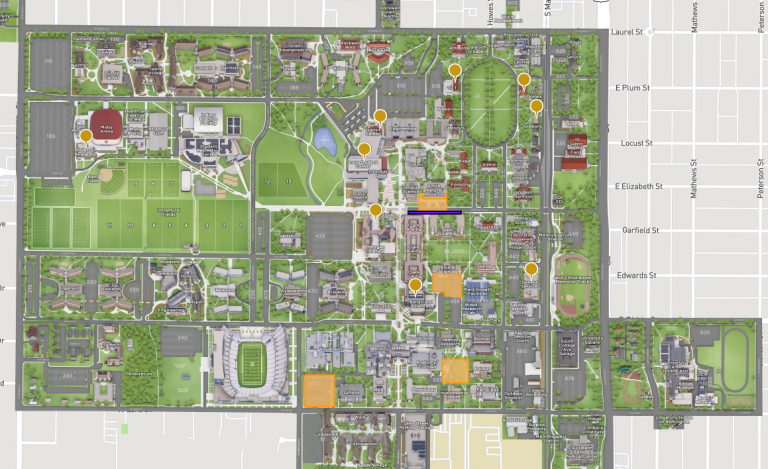Electronic Information & Technology
Overview
Colorado State University believes that a diverse community of students and faculty includes people with disabilities, both apparent and non-apparent. And just as disability is a part of diversity, so accessibility must be considered an essential aspect of inclusion. The accessibility of buildings and basic services clearly contributes to the creation of an inclusive campus, but so does the accessibility of technology and electronic information.
Purpose
The digital revolution has empowered individuals with disabilities by providing access to information and services that were previously out of reach. Many students, faculty and staff use “assistive technologies” to complete their work. Assistive technology tools perform tasks like:
- Text-to-speech
- Speech recognition
- Screen reading
- Magnification
- Synced audio recording
- Literacy support
Locate Assistive Technology
The Assistive Technology Resource Center (ATRC) offers assessments, assistive technology tools, and training for students and employees with disabilities. The ATRC also provides assistive technology for students at various campus locations, including:
- Academic Advancement Center
- Adult Learner & Veteran Services
- Anderson Academic Center (Athletics)
- Behavioral Science Building Laptop Checkout
- Morgan Library
- Student Disability Center (Alternative Testing)

Electronic Information and Technology FAQ
What is inclusive design?
CSU promotes a proactive approach to ensuring equal access—a methodology that anticipates a wide range of learners with diverse needs. Known as universal design (UD) or “inclusive design,” this approach results in electronic content that is ready to be used by nearly all students, faculty or staff, both with and without disabilities. Inclusively designed resources can be used without the need for adaptation by those employing a variety of technologies, including assistive technologies.
What do we mean by inclusively designed electronic information?
Assistive technology ceases to be effective when it encounters content that is not designed with accessibility in mind. Screen reading software, for example, may be of limited use with documents that lack organizational headings, image labels, or editable text—elements that can easily be built into the materials when the authors know how and understand the importance of doing so. Features of inclusive electronic content include:
- Scanned PDFs that have readable and searchable text
- Websites or documents with logical heading structure
- Tables with header rows
- Content with good color contrast
- Images with alternative text
- Videos with captions
- Videos with audio description
- Web or PDF forms with descriptive labels, logical tab order
Whose responsibility is electronic inclusion?
It takes a community effort to make electronic and information technology inclusive. Each person plays a role within their sphere of influence in promoting an inclusive campus climate as it relates to electronic content and information technology.
Colorado State University has adopted a policy of “Accessibility of Electronic Information and Technologies.” In this policy, the university recognizes that everyone who creates electronic content plays a role in ensuring its accessibility to the widest range of users.
Where can I learn how to make electronic content inclusive?
CSU’s central resource for electronic inclusion is the Accessibility By Design website, which includes:
- Video Series: Stories of Inclusive Technology. (Note: the videos are available through login for CSU community members. For those external to CSU, the videos are available for purchase through CSU Ventures.)
- Step-by-step tutorials on creating inclusive content
- Best practices for purchasing new technology and information systems
- Web accessibility testing guide
Where do I go for support?
- You may request direct support from from the Web Accessibility Subcommittee on issues related to inclusive web or application content and design.
- Contact the ATRC for support related to creating inclusive documents such as PDF, Word, PowerPoint, etc.
What if I encounter an electronic access issue at CSU?
Assistive technology users who are having problems accessing any electronic or information technology at CSU can report an electronic access issue through the ATRC.
Related Resources
- Assistive Technology Resource Center
- CSU’s Accessibility by Design Website
- CSU’s Accessibility of Electronic Information and Technologies Policy
- CSU’s Inclusive Physical and Virtual Campus Policy
